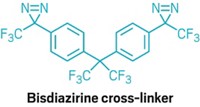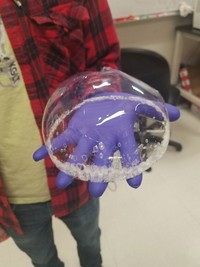Advertisement
Grab your lab coat. Let's get started
Welcome!
Welcome!
Create an account below to get 6 C&EN articles per month, receive newsletters and more - all free.
It seems this is your first time logging in online. Please enter the following information to continue.
As an ACS member you automatically get access to this site. All we need is few more details to create your reading experience.
Not you? Sign in with a different account.
Not you? Sign in with a different account.
ERROR 1
ERROR 1
ERROR 2
ERROR 2
ERROR 2
ERROR 2
ERROR 2
Password and Confirm password must match.
If you have an ACS member number, please enter it here so we can link this account to your membership. (optional)
ERROR 2
ACS values your privacy. By submitting your information, you are gaining access to C&EN and subscribing to our weekly newsletter. We use the information you provide to make your reading experience better, and we will never sell your data to third party members.
Synthesis
Talented 12 class of 2015: Where are they now?
Changing the world with feats of chemistry takes a while. So we asked our inaugural class what they’ve been up to this past year. No pressure.
August 21, 2016
| A version of this story appeared in
Volume 94, Issue 33
MIT
Olsen reports that his group published its first paper on loop defects in polymer networks in Physical Review Letters (DOI: 10.1103/physrevlett.116.188302).

Max Planck Institute for Terrestrial Microbiology
Erb’s team successfully engineered enzymes to pull CO2 from the atmosphere and efficiently convert it into useful carbon-based compounds.
Howard Hughes Medical Institute’s Janelia Research Campus
“After a year of heavy traveling and writing papers, I finally got back into the lab and made some dyes with my own hands.”
Air Products & Chemicals
MacDonald tells us he’s been whipping up new silicon-based compounds to build microelectronic devices with three-dimensional memory technology.
Spero Therapeutics
Lister disclosed his company’s lead drug candidate, SPR741, for the first time at a meeting in Boston. SPR741 is a molecule that disrupts the outer membrane of resistant bacteria so that antibiotics can sneak in and attack.
Top secret start-up
“I got a job at a biotech company that I’m super stoked about.” The firm is still in stealth mode, though, so Malyshev wouldn’t name names.
University of Illinois, Urbana-Champaign
Hull reports that her lab has “successfully done both directed and undirected anti-Markovnikov-selective amination” this year. (Translation for nonorganickers: They’ve achieved both tight and loose control over a reaction that adds amines to the most crowded carbon in a carbon-carbon double bond.)
UCLA
“My lab ran its first experiment. It worked!” Nelson says. The organic chemist adds that he also taught his first classes ever. “The second class was 100 times better than the first.”
Tangible Science
Havenstrite says her firm was issued two patents and received U.S. Food & Drug Administration clearance for its contact lens technology, which helps treat dry eye.

Harvard
“I graduated my first class of Ph.D. students this year!”
Harvard Medical School
Hooker celebrated his first graduate student getting her Ph.D. And the radiochemist will soon celebrate the birth of his second child, in mid-September.
Stanford
Kanan pointed us to a paper his team published in Nature on a reaction that uses simple molten salts to convert greenhouse gas CO2 into building blocks for making a type of polyester plastic (DOI: 10.1038/nature17185).





Join the conversation
Contact the reporter
Submit a Letter to the Editor for publication
Engage with us on Twitter